Tasty, moist pork wrapped with half-soft, half-crispy dough, Shanghai Sheng Jian Bao (生煎包, pan-fried pork buns), traditionally served as breakfast, make a great party food.
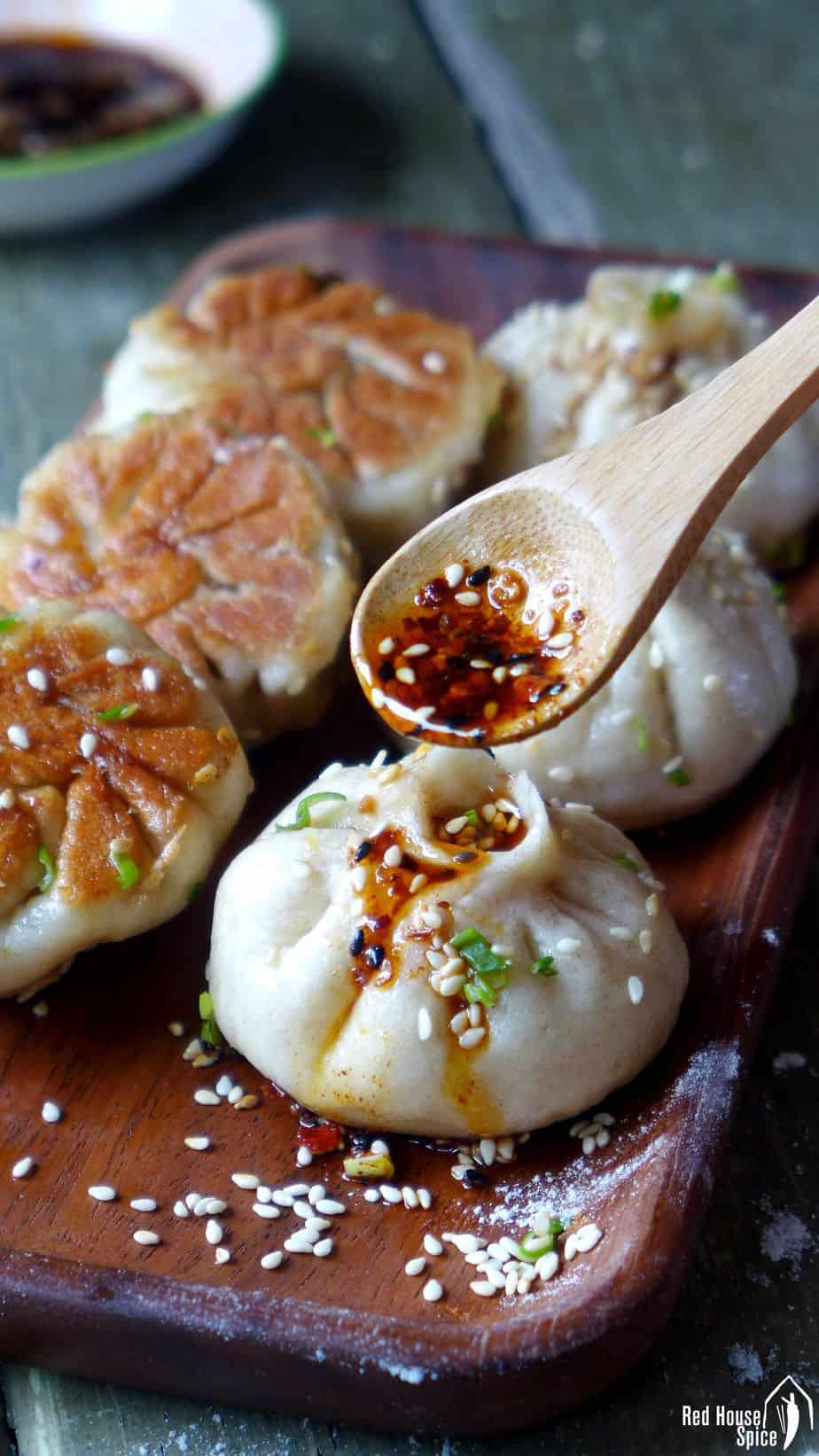
Like many modern cities, Shanghai is full of wonderful choices when it comes to food. I had numerous scrumptious meals during my trips there.
The diversity and creativity of this giant city’s culinary profile was quite impressive. However, the most memorable meal I had there was at a humble, busy breakfast stall which served the local speciality: Sheng Jian Bao/生煎包 (pan-fried pork buns).
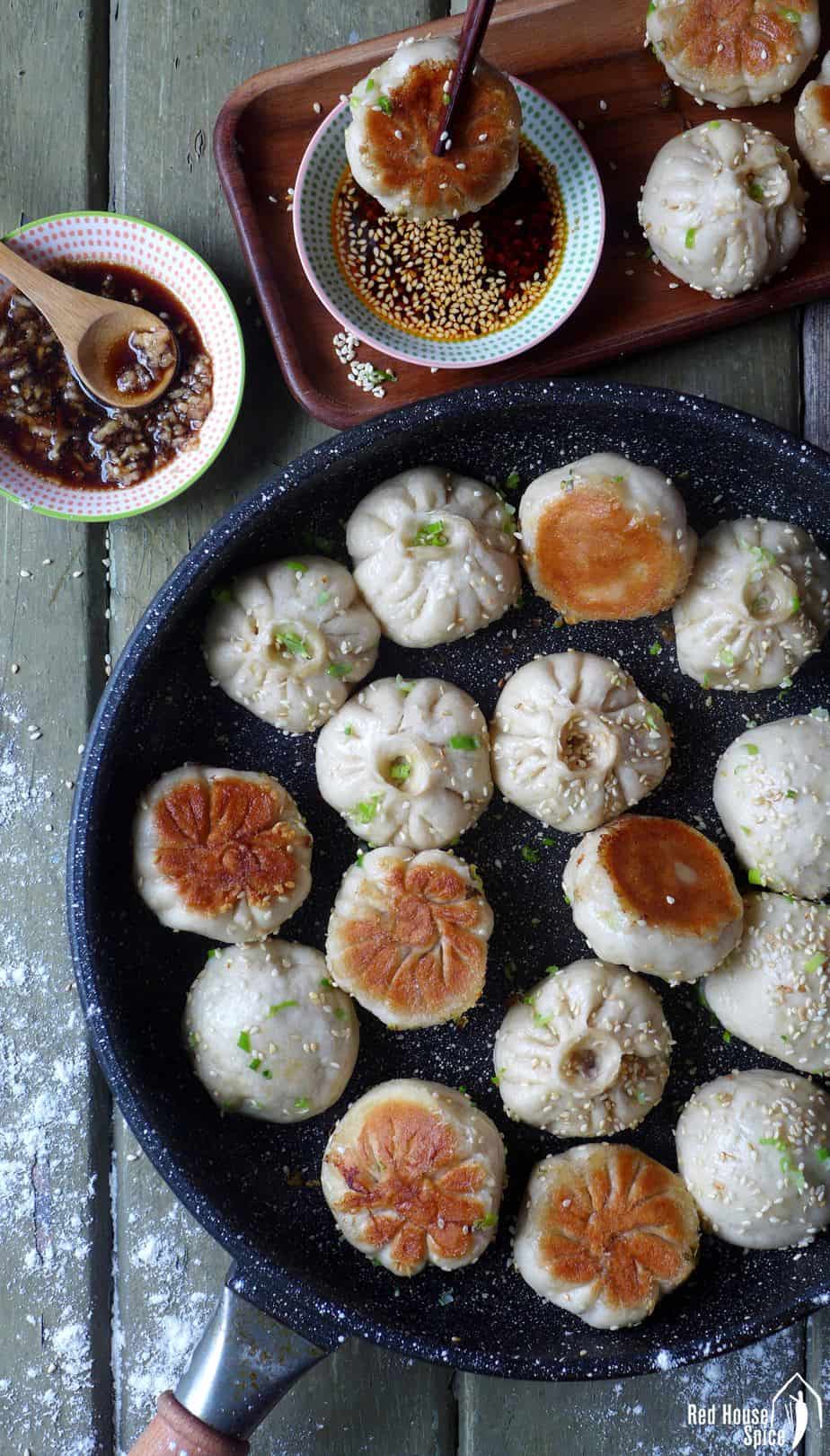
Sheng Jian Bao/生煎包 (aka Sheng Jian Mantou/生煎馒头) is a type of Chinese pan fried bao buns. The wrapper is made from yeast dough and the filling contains minced pork, spring onion and various seasonings. It’s quite small in size, similar to a golf ball or even smaller.
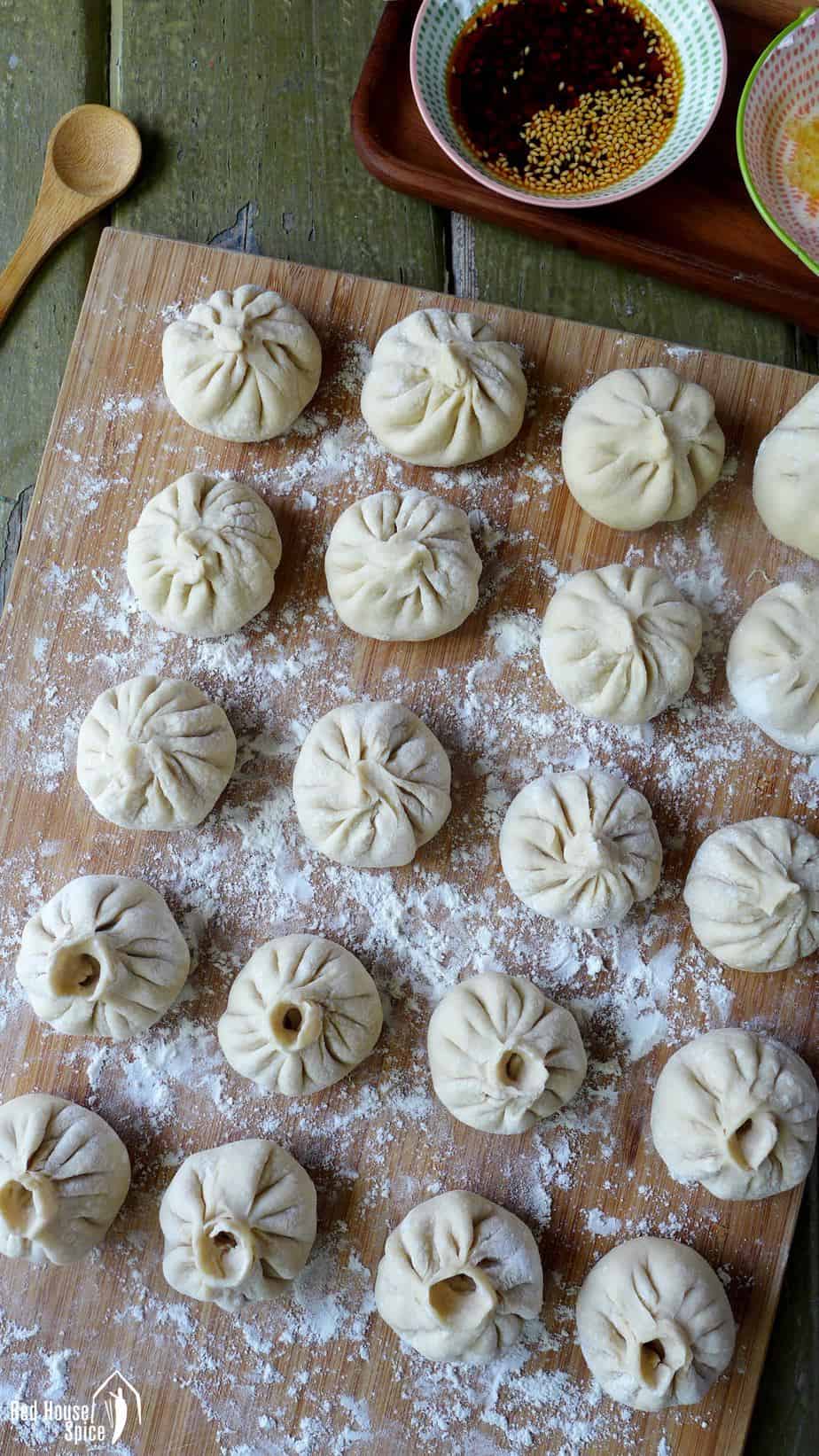
In Shanghai, Sheng Jian Bao/生煎包 (pan-fried pork buns) are traditionally served as breakfast at little cafes and street stalls. They are often cooked in a large pan in front of the queueing customers.
Truly fresh and super tasty, they are simply irresistible! The wrapper has a lovely soft texture with a golden, crispy base . The filling is very flavoursome and moist.
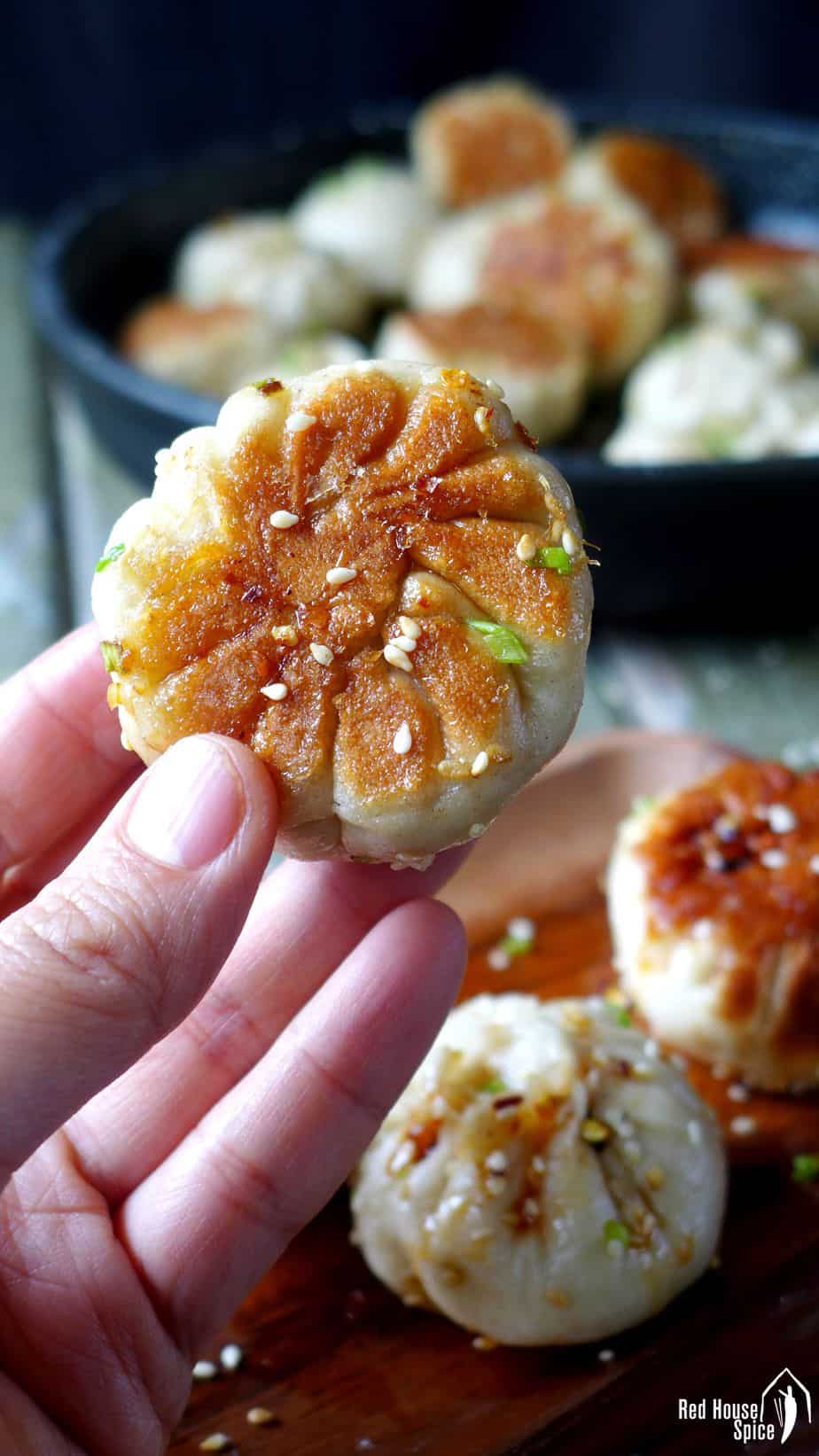
A few years ago, I got a chance to learn the technique of making Sheng Jian Bao/生煎包 (pan-fried pork buns) from a Shanghainese friend. I found it rather simple as it was very similar to how we cook Shui Jian Bao (水煎包, means water-fried buns literally, often vegetarian) in the North-west of China where I grew up. There are five steps to follow:
1. Make the dough. It’s a type of simple yeast dough used in many Chinese dishes, like the one I shared earlier: Spring onion flatbread.

2. Mix the filling. The minced pork is seasoned with spring onion, ginger, light soy sauce, rice wine, Sichuan pepper and sesame oil, etc. In order to make the cooked filling soft and moist, you need to gradually add quite a bit of water (or even better, chicken stock) to the mixture. Stir constantly until no more liquid can be seen.

3. Shape the buns. In this part, you might find it a bit intimidating to seal the buns. It is time consuming if you are not familiar with the folding technique. But I’m sure you’ll soon get the hang of it (please refer to the images above for instructions).
4. Fry the buns. Firstly, crisp the bottom part of the buns in hot oil. Then pour water into the pan and cover with a lid. The steam will help to cook through pretty quickly. A tip: You can either put the folded side facing up or down (As shown in the photos below, I cooked a panful in two ways). Just remember to securely seal the top if you prefer the latter to avoid any juice leaking from the filling.

5. Sprinkle the garnish. I particular like this final touch. Sprinkle finely chopped spring onion and toasted sesame seeds onto the buns at the very last stage of cooking. The remaining steam in the pan helps these sprinkles to stick onto the wrappers. Not only does it looks pretty, it also adds extra flavour to the buns.
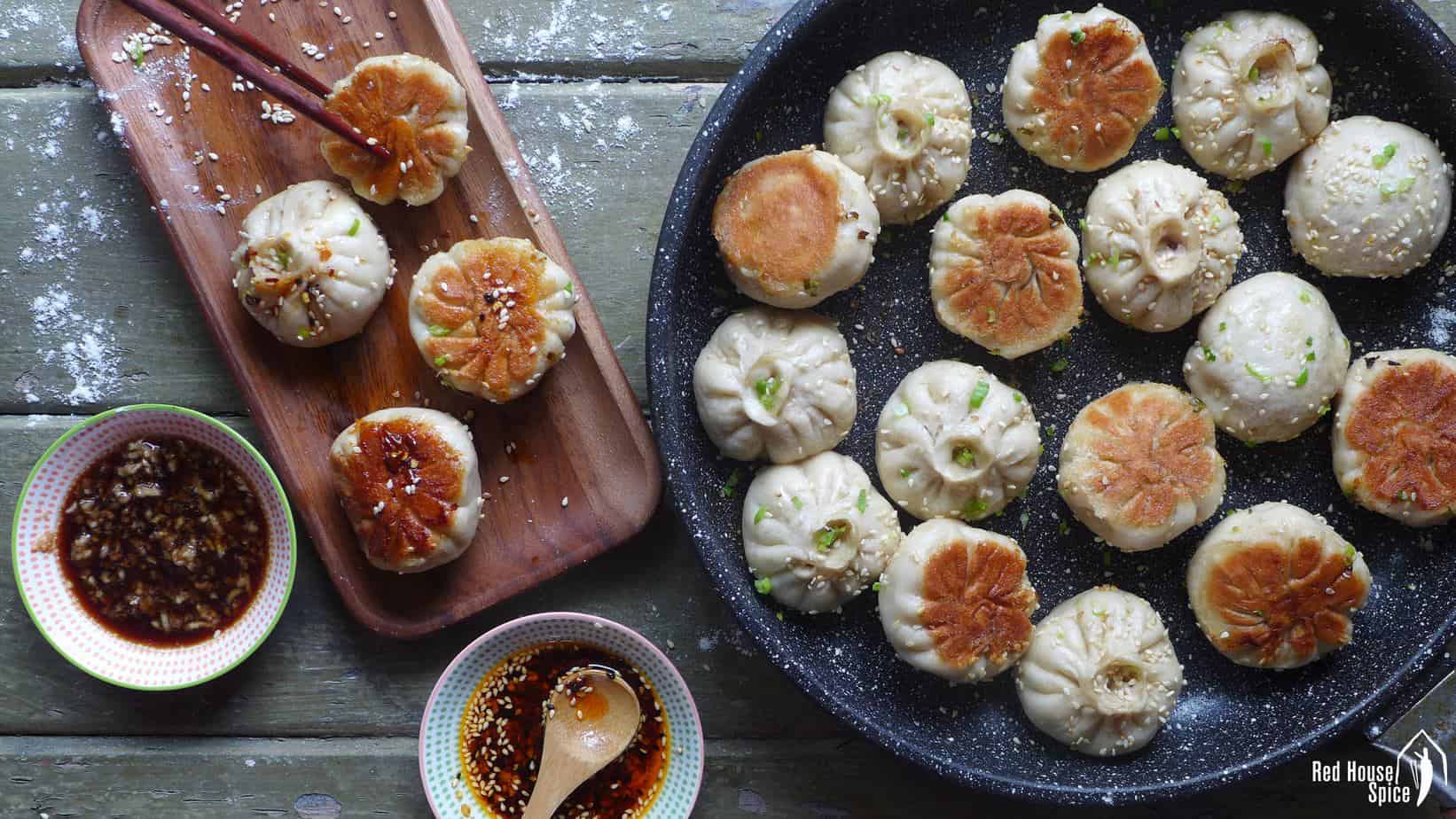
I often make Shanghai Sheng Jian Bao/生煎包 (pan-fried pork buns) for parties. It’s a perfect finger food that’s loved by young and old. If you wish, prepare some dipping sauce on the side. For example, you can use the dressing recipes for dumplings, etc.. Don’t forget to add a dash of homemade chilli oil if you fancy spicing up the buns.
Other bao recipes
Looking for more bao recipes? here are some popular ones to try:
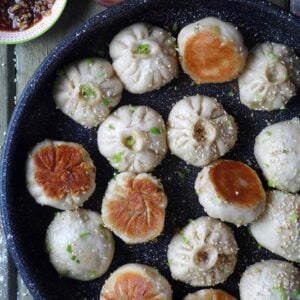
Sheng Jian Bao: Pan-fried pork buns (生煎包)
Ingredients
For the wrappers
- 250 g all-purpose flour - about 2 cups (see note 1)
- 1 teaspoon sugar
- 1 teaspoon dried instant yeast - see note 2
- 140 ml lukewarm water - about 9 tbsp
For the filling
- 250 g minced pork - 9oz
- 2 tablespoon spring onion - finely chopped
- ½ tablespoon ginger - minced
- 2 teaspoon light soy sauce
- ½ teaspoon Shaoxing rice wine
- ½ teaspoon sesame oil
- ¼ teaspoon salt
- 1 pinch ground Sichuan pepper - or Chinese five-spice powder
- 5 tablespoon water - or chicken stock
For frying
- 1 tablespoon cooking oil
- 240 ml water - about 1 cup
For garnishing
- Toasted sesame seeds
- Spring onion - finely chopped
Instructions
Prepare the dough
- In a large bowl, mix flour, yeast and sugar. Pour in water little by little while stirring with a pair of chopsticks (or a fork).
- Then knead with your hand until a smooth, elastic dough forms (see note 3). Cover the bowl with a wet kitchen towel.
- Leave to rise in a warm place until double in size. It will take between 40 minutes to 1.5 hours depending on the room temperature.
Mix the filling
- Put all the ingredients for the filling (except for water/stock) into a large bowl.
- Swirl constantly in the same direction while gradually adding water/stock spoon by spoon into the mixture.
Shape the buns
- Knead the dough on a floured work surface until it goes back to its original size.
- Divide it into 20 equal portions. Roll each piece into a disk-like wrapper.
- Hold the wrapper in the palm of one hand. Place some filling in the middle. Use the other hand to fold the edge anticlockwise by pinching with thumb and index finger until the bun is completely sealed (please refer to the images above).
- Leave to rest for 15 minutes before frying.
Fry the buns
- Heat up oil in a frying pan over a high heat. Place in the buns (see note 4 & 5).
- When the bottom part becomes golden brown, pour in water then cover with a lid.
- Uncover when the water evaporates completely. Sprinkle sesame seeds and spring onion over.
- Cook another 30 seconds or so to crisp up.
NOTES
NUTRITION
NUTRITION DISCLOSURE: Nutritional information on this website is provided as a courtesy to readers. It should be considered estimates. Please use your own brand nutritional values or your preferred nutrition calculator to double check against our estimates.


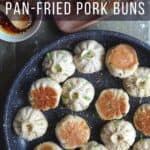
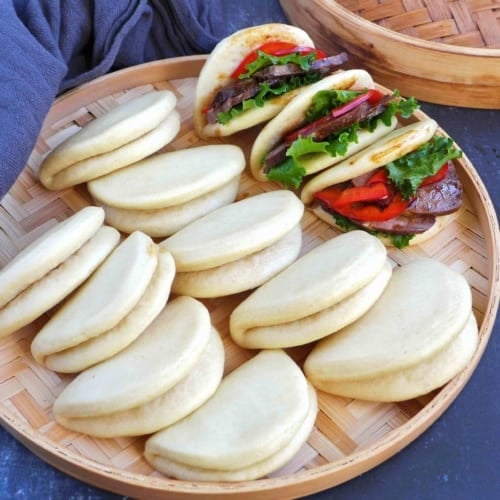
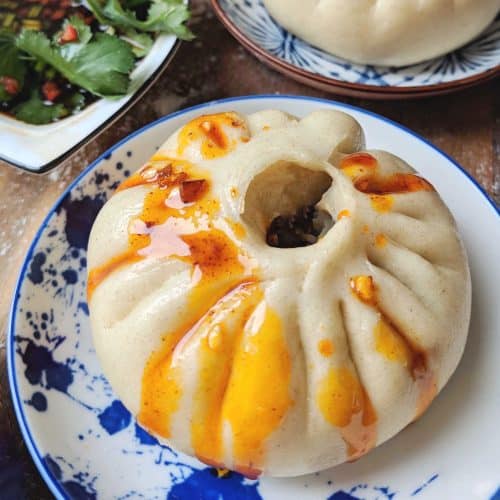
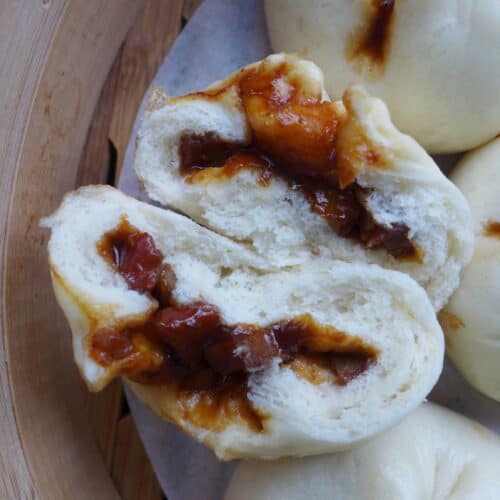
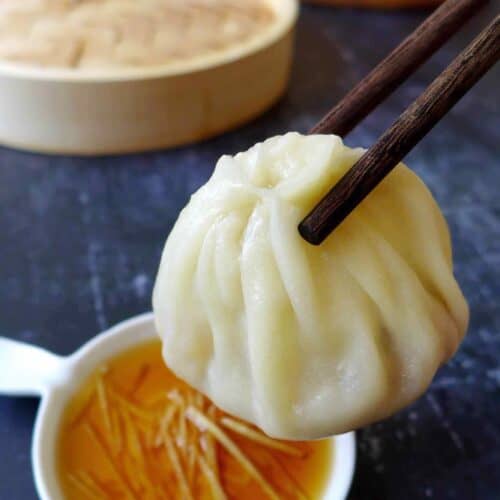
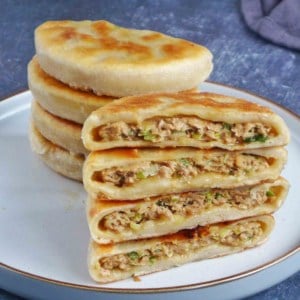
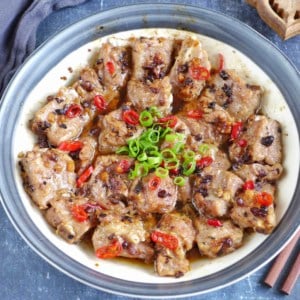

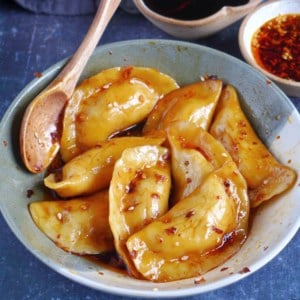
Hi! Is it possible to just pan fry it without adding the water? will the pork inside be fully cooked?
You’ll need to use water to steam them. Otherwise, the wrappers will be burnt before the filling becomes fully cooked.
I’m excited to give this a try! I saw you mention that if using ground beef, you’d want something not too lean. My preferred meat is ground turkey. If there anything I could add to the turkey to make it more suited for this recipe?
Thank you so much!
Hi Kristin! The goal is to create a juicy, tender filling that doesn’t taste too dry once cooked. If using lean turkey mince, you can try adding some aspic in the filling (find instructions in my recipe for Soup Dumplings).
This sounds so delicious! I want to try making these so badly! Would you ever add aspic or gelled broth in solid form when you’re mixing the filling (kind of like in making XLB), or do you always add liquid broth? Thank you!!!
Yes, you can add aspic for sure. Please check out my recipe for Soup Dumplings (Xiao Long Bao) which uses aspic to make an extra soupy filling.
Thanks so much for the great recipe. Immediatly joined out family favorite list
My pleasure to share Dan!
Truly delicious! Thank you for sharing the recipe! Came out perfectly and was a huge hit!
Wonderful! Glad you’ve enjoyed it!
I want to try Bao but only steamed. Do you have a recipe for steamed Bao? I am a lover of anything dumpling or rice and have just discovered Bao. They look so delicious. I love your recipes because they are not intimidating and encourage me to be adventurous. Thank you.
Yes Diane! I have several steamed bao recipes: Pork and Carrot Bao, Char Siu Bao (Chinese BBQ Pork Bao), Gua Bao (Taiwanese bao with pork belly) and sweet ones like Custard Bao and Red Bean Bao. Happy steaming!
We made these yesterday and they were delicious. As good as we ate in Shanghai when living there. Thank you, Wei! Rita&Steve, Masterton NZ.
That’s wonderful to hear! Glad you’ve “travelled” back to Shanghai through my recipe.
Love your recipes – I make these for my mom all the time because it reminds her of her childhood. I’m wondering how you go about estimating the calories for this dish?
Very happy to hear that Rosy! It’s so sweet to cook childhood favourite for you mom. For this recipe, the estimated calories for 5 buns are 406 kcal.
I have to ask about storage. If I was to freeze them, should it be before or after cooking? And assuming they’re not all devoured on the day, how long do they keep and what is the best way to store them please?
Hi Frances! For pan-fried buns, you can freeze the uncooked ones (right after the second rise) then cook the usual way without defrosting. Alternatively, keep the cooked ones in the fridge for 2 days or in the freezer for 2 months. Defrost first then reheat with a little oil. Hope this helps!
Your post mentioned that this recipe is very similar to shui Jian Bao. What modifications would you make to the recipe to make shui Jian Bao? Thanks for this site – I successfully made dumplings with a crispy skirt and it was a big hit!
Shui Jian Bao is a name used in northern regions of China for this type of pan-fried yeast buns (Though Taiwanese use this term too). They’re usually a little bigger and the filling can be more versatile. But the dough and cooking method is essentially the same. Very happy to know you’ve enjoyed my dumpling recipes!